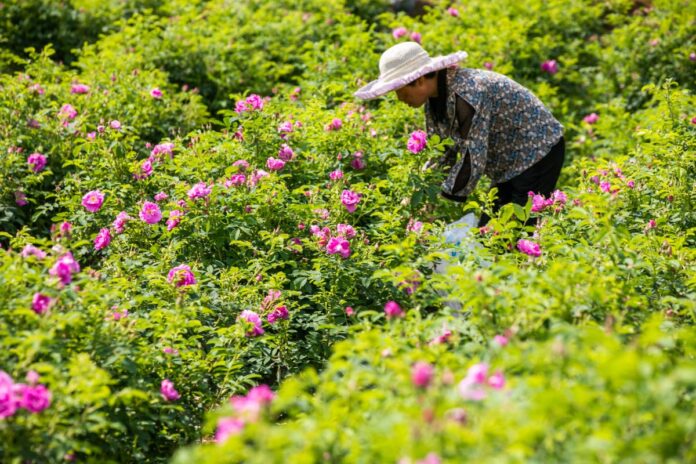Anyone looking at Gusheng village, Bijie, Guizhou province, 20 years ago would have seen a despairing sight. The wells were almost dry in the desolate rural community surrounded by the soaring karst hills of the Wumeng Mountains, and the rainwater that trickled down from the rooftops was a more reliable source of water. Soil erosion caused rocks to poke out of the barren land, so farmers often tripped over them. Crop yields were barely sufficient to feed the locals. They dressed in rags, and their thatched dwellings built from sun-dried tree branches were crumbling and in need of repair. The grim scenes were outlined in a poem passed down by word of mouth by Gusheng’s various generations. The four-line rhyme, written to describe the area, now serves as the introduction to a permanent exhibition located in a row of bungalows near the village entrance. The display records the transformation that has unfolded in the community, where ethnic Han residents live alongside members of the Miao group. Outside the bungalows, lush mountains and concrete driveways form a stark contrast to the grainy, black-and-white photos on display inside the buildings. The environmental degradation that once beset Gusheng was the result of local people’s struggle to survive in a region unfit for intensive farming, said Qiu Qian, a local official. Garbage is cleared away with the help of a ship on the Wujiang River in Bijie To reverse widespread poverty, the only way out for impoverished farmers seemed to be to open up more farmland, mostly cornfields, all the way up the steep hillsides, said Qiu, who was born and bred in the area. However, the undertaking destroyed the already scarce vegetation coverage, which started a downward spiral of environmental deterioration that environmentalists referred to as stony desertification, he said, referring to the process by which the vegetation and soil-covered karst areas degenerate into landscapes of bare rocks because of human activity. Now, in place of the once-bare mountain slopes, different cash crops, such as dense walnut forests, are being grown on the lower hillsides. Moreover, sturdy species such as cypress are being planted higher up, where the soil is thinner, in an attempt to help restore the environment. In 2006 Gusheng, once home to some of the country’s most intractable poverty, was chosen as an experimental ground to foster environmentally friendly farming methods. Over 10 years or so, development strategists from establishments such as the Chinese Academy of Sciences and the Beijing Forestry University worked out a plan to return the farmland to forests. To generate much-needed income, they suggested planting fruit trees, which proved to be more financially rewarding and less environmentally demanding than grain crops. The project has proved a success. According to figures provided by the local authorities, per capita income in Gusheng rose from less than 1,500 yuan (£162) in 2005 to 10,800 yuan (£1,165) in 2019. Over the same period the village’s forest coverage rose from less than 20 per cent to almost 90 per cent. Gusheng illustrates the achievements of a national rural reform pilot zone created in Bijie 35 years ago. The zone, established in 1988, was the first of its kind, focusing on both curbing poverty and restoring the environment. Another example of the zone’s success is Qianxi, once a poverty-stricken county in Bijie that is home to people from several ethnic groups, such as the Miao and the Yi. One of its main success stories is Huaduli, or Floral Capital, a resort in Xinren township of the county. Local authorities have spent about 42 million yuan (£4.6 million) creating a holiday resort covering 16.6 acres on the edge of the mountains. ‘It is the largest campsite in Guizhou, with some of the best facilities and views on offer,’ said Jin Li, vice-president of Guizhou Shanshui Culture and Tourism, a company that has invested in the project and oversees its day-to-day operations. The resort, opened to the public in May, was co-constructed by Huawu village, a formerly impoverished Miao community, which holds a stake of about 10 per cent. The project has helped enrich local farmers by creating jobs and bringing in visitors keen to buy local farm produce and traditional handicraft items, Jin said.
1 September, Sunday, 2024


